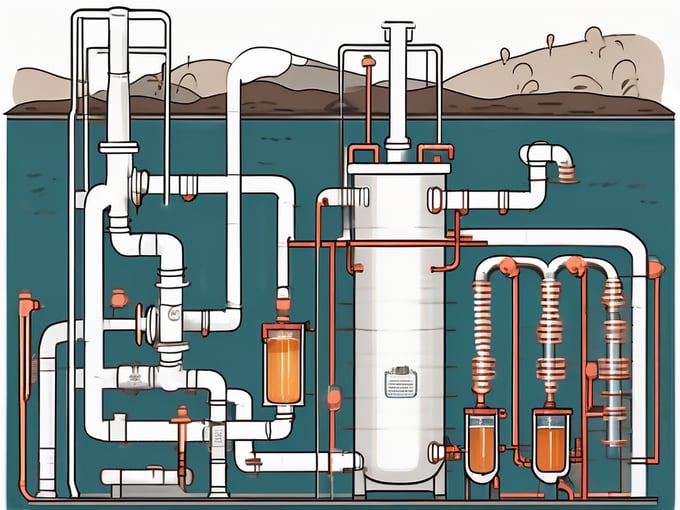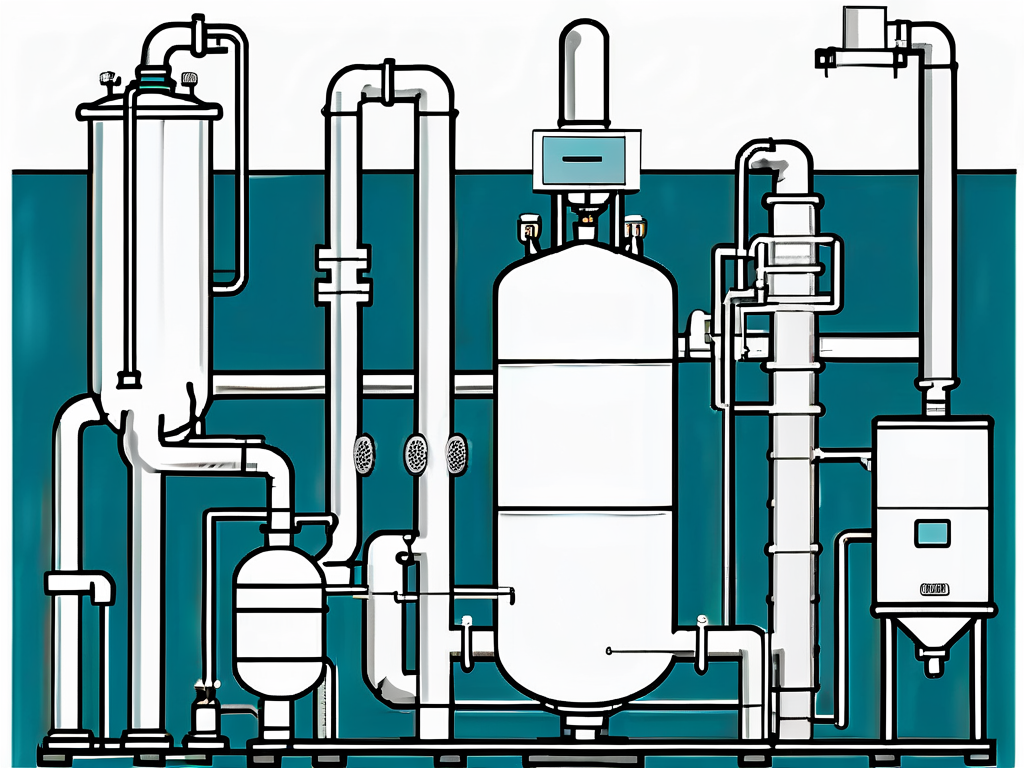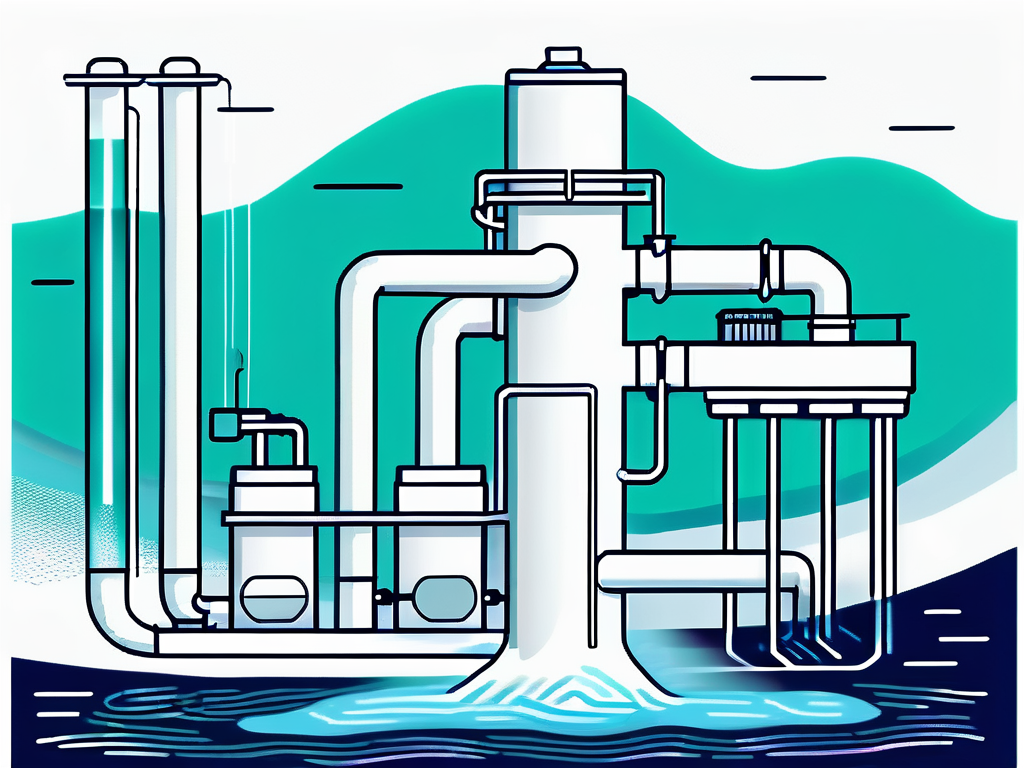
Filtration: Wastewater Treatment Explained
Filtration is a crucial process in wastewater treatment, responsible for the removal of solid particles, microorganisms, and other contaminants from wastewater. This process is essential to ensure the safety and cleanliness of water before it is discharged back into the environment or reused. The filtration process can be broken down into various stages, each with its own specific purpose and method of operation.
Understanding the intricacies of filtration in wastewater treatment requires a deep dive into the various methods, the types of filters used, the materials filtered out, and the role of filtration in the broader context of wastewater treatment. This glossary article aims to provide a comprehensive overview of these aspects, providing a detailed understanding of the filtration process in wastewater treatment.
Types of Filtration
There are several types of filtration used in wastewater treatment, each designed to remove different types of contaminants. The choice of filtration method depends on the nature of the wastewater and the specific contaminants present.
Common types of filtration include mechanical filtration, biological filtration, and chemical filtration. Each of these methods has its own advantages and disadvantages, and they are often used in combination to achieve the best results.
Mechanical Filtration
Mechanical filtration involves the physical removal of particles from wastewater. This is typically achieved using a filter medium, such as sand or gravel, which traps the particles as the water passes through. Mechanical filtration is particularly effective at removing larger particles, but it may not be sufficient to remove smaller particles or dissolved substances.
The efficiency of mechanical filtration can be improved by using filters with smaller pore sizes or by increasing the pressure to force the water through the filter. However, these modifications can also increase the energy requirements and the cost of the filtration process.
Biological Filtration
Biological filtration uses living organisms, such as bacteria and algae, to remove contaminants from wastewater. These organisms consume the contaminants as food, effectively removing them from the water. Biological filtration is particularly effective at removing organic matter and nutrients, such as nitrogen and phosphorus, which can cause environmental problems if they are discharged into water bodies.
While biological filtration can be highly effective, it also requires careful management to ensure that the organisms remain healthy and active. This can include maintaining the correct temperature and pH, providing sufficient oxygen, and preventing the build-up of toxic substances.
Chemical Filtration
Chemical filtration involves the use of chemical reactions to remove contaminants from wastewater. This can include processes such as precipitation, where chemicals are added to the water to cause certain contaminants to form solid particles that can be easily removed.
Chemical filtration can be highly effective at removing a wide range of contaminants, including metals, phosphates, and certain types of organic matter. However, it can also be more complex and costly than other types of filtration, and it may produce hazardous by-products that need to be carefully managed.
Filter Media
The filter media is the material that the wastewater passes through during the filtration process. The choice of filter media can have a significant impact on the effectiveness of the filtration process, as it determines which particles are removed and how quickly the water can pass through the filter.

Common types of filter media include sand, gravel, activated carbon, and synthetic materials. Each of these materials has its own advantages and disadvantages, and the choice of filter media often depends on the specific requirements of the wastewater treatment process.
Sand and Gravel
Sand and gravel are commonly used as filter media due to their availability and low cost. They are particularly effective at removing larger particles from wastewater, but they may not be sufficient to remove smaller particles or dissolved substances.
The effectiveness of sand and gravel filters can be improved by using a combination of different sizes of sand and gravel, which allows for more efficient trapping of particles. However, these filters can also become clogged over time, requiring regular maintenance and cleaning.
Activated Carbon
Activated carbon is a type of filter media that is particularly effective at removing organic matter and certain types of chemicals from wastewater. It works by adsorbing the contaminants onto its surface, effectively trapping them and removing them from the water.
While activated carbon can be highly effective, it can also be more expensive than other types of filter media. In addition, the activated carbon can become saturated with contaminants over time, requiring it to be replaced or regenerated.
Synthetic Materials
Synthetic materials, such as plastic or ceramic, can also be used as filter media. These materials can be designed with specific pore sizes and shapes, allowing for precise control over the filtration process.
While synthetic materials can offer high performance, they can also be more expensive than natural materials. In addition, they may require more careful handling and disposal due to their potential environmental impact.
Role of Filtration in Wastewater Treatment
Filtration plays a crucial role in the wastewater treatment process, serving as a key step in the removal of contaminants. It is typically used in combination with other treatment methods, such as sedimentation and disinfection, to achieve the desired water quality.
The role of filtration in wastewater treatment can vary depending on the specific requirements of the treatment process. In some cases, filtration may be used as a primary treatment method, removing the majority of the contaminants from the wastewater. In other cases, it may be used as a secondary or tertiary treatment method, providing additional cleaning after other treatment methods have been applied.
Primary Treatment
In primary treatment, filtration is often used to remove large particles and debris from the wastewater. This can help to prevent damage to downstream equipment and improve the efficiency of subsequent treatment processes.
Primary filtration is typically performed using coarse filters, such as screens or grit chambers, which are designed to remove large particles. The filtered wastewater is then typically sent to a sedimentation tank, where smaller particles can settle out of the water.
Secondary Treatment
In secondary treatment, filtration is used to remove smaller particles and organic matter from the wastewater. This is typically achieved using finer filters, such as sand filters or membrane filters, which can remove particles down to the micron level.
Secondary filtration is often used in combination with biological treatment methods, which can help to remove dissolved organic matter and nutrients. The filtered wastewater is then typically disinfected before it is discharged or reused.
Tertiary Treatment
In tertiary treatment, filtration is used to provide additional cleaning of the wastewater, removing any remaining particles or contaminants. This is typically achieved using advanced filtration methods, such as activated carbon filtration or reverse osmosis, which can remove even the smallest particles and dissolved substances.
Tertiary filtration is often used when the wastewater is intended for reuse, such as for irrigation or industrial processes. The filtered wastewater is typically disinfected and then treated to adjust its pH and other properties before it is reused.
Challenges and Future Directions
While filtration is a crucial component of wastewater treatment, it also presents several challenges. These include the energy requirements of the filtration process, the management of filter media, and the disposal of filtered solids.

Future developments in filtration technology are likely to focus on addressing these challenges, with the aim of improving the efficiency and sustainability of the wastewater treatment process. This may include the development of new filter materials, the use of renewable energy sources, and the recovery of resources from filtered solids.
Energy Requirements
The filtration process can be energy-intensive, particularly when high pressures are required to force the water through the filter. This can contribute to the overall energy consumption of the wastewater treatment plant, which can be a significant concern in terms of cost and environmental impact.
Future developments in filtration technology may focus on reducing the energy requirements of the process. This could include the use of more efficient filter materials, the optimization of the filtration process, or the use of renewable energy sources to power the filtration process.
Filter Media Management
The management of filter media can also be a challenge in the filtration process. This includes the replacement or regeneration of filter media, the cleaning of filters, and the disposal of used filter media.
Future developments in filtration technology may focus on improving the management of filter media. This could include the development of longer-lasting filter materials, the use of self-cleaning filters, or the recycling of used filter media.
Disposal of Filtered Solids
The disposal of filtered solids can be a significant challenge in the filtration process. These solids can contain a range of contaminants, including organic matter, metals, and pathogens, which can pose a risk to the environment and human health if they are not properly managed.
Future developments in filtration technology may focus on improving the disposal of filtered solids. This could include the recovery of resources from the solids, such as nutrients or energy, or the treatment of the solids to reduce their environmental impact.
Conclusion
Filtration is a crucial process in wastewater treatment, responsible for the removal of a wide range of contaminants. While the process presents several challenges, ongoing developments in filtration technology are likely to lead to improvements in the efficiency and sustainability of wastewater treatment.
Understanding the intricacies of filtration in wastewater treatment is essential for anyone involved in the design, operation, or management of wastewater treatment plants. This glossary article has provided a comprehensive overview of the filtration process, including the types of filtration, the filter media used, and the role of filtration in wastewater treatment.



